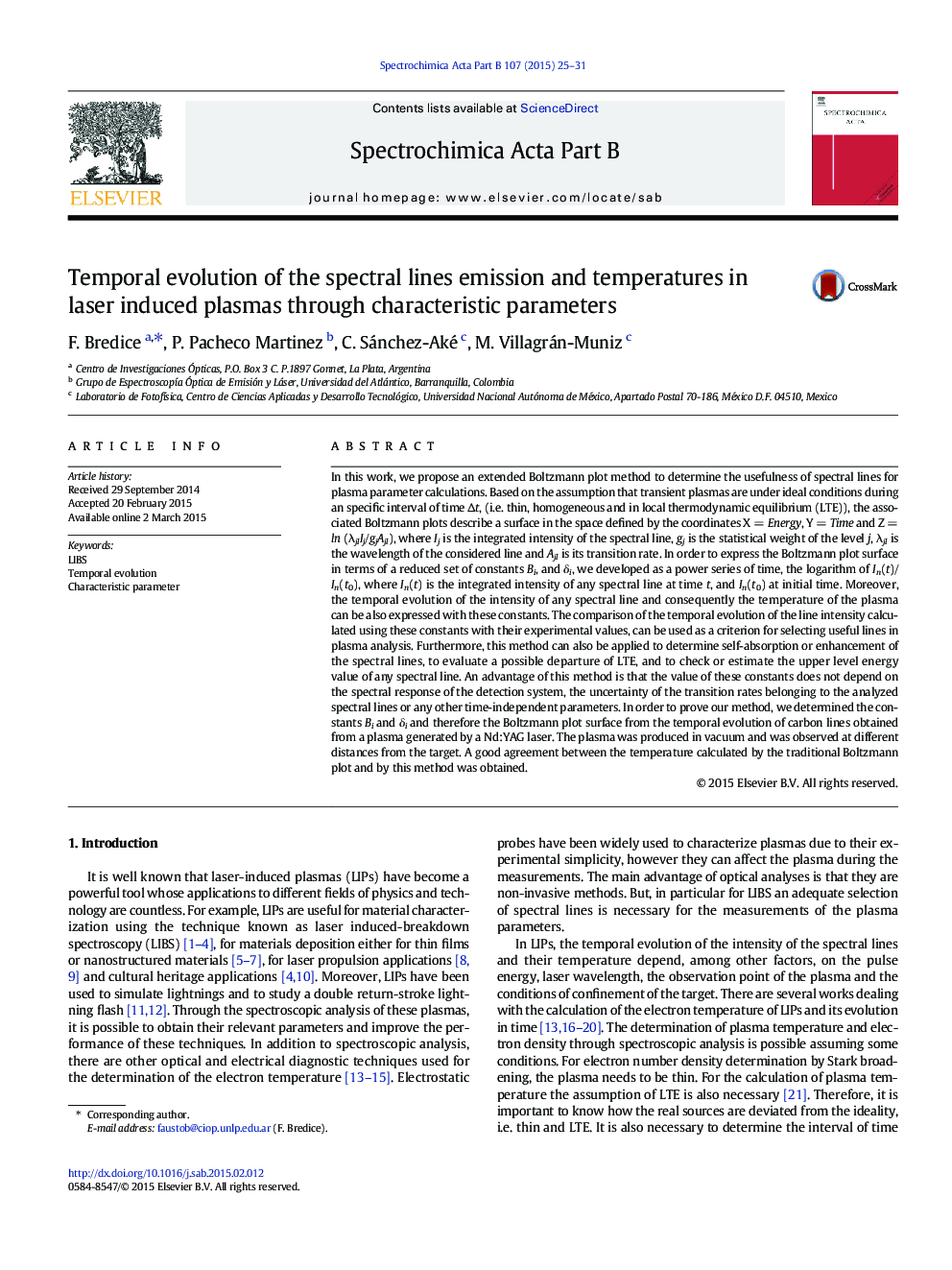| Article ID | Journal | Published Year | Pages | File Type |
|---|---|---|---|---|
| 1239618 | Spectrochimica Acta Part B: Atomic Spectroscopy | 2015 | 7 Pages |
•The time evolution of the spectral lines for each point of the plasma can be expressed by a reduced set of constants Bi and δi.•These constants can be used as a criterion for line selection in LIBS and the evaluation of the LTE departure of the plasma.•It is possible to check if any spectral lines are useful for Boltzmann analysis or if they have been properly classified.•The temperature evolution for each point of the plasma depends on its initial temperature T(t0) and the constants Bi.•The determination of these constants does not depend on any parameters which are time-independent.
In this work, we propose an extended Boltzmann plot method to determine the usefulness of spectral lines for plasma parameter calculations. Based on the assumption that transient plasmas are under ideal conditions during an specific interval of time Δt, (i.e. thin, homogeneous and in local thermodynamic equilibrium (LTE)), the associated Boltzmann plots describe a surface in the space defined by the coordinates X = Energy, Y = Time and Z = ln (λjlIj/gjAjl), where Ij is the integrated intensity of the spectral line, gj is the statistical weight of the level j, λjl is the wavelength of the considered line and Ajl is its transition rate. In order to express the Boltzmann plot surface in terms of a reduced set of constants Bi, and δi, we developed as a power series of time, the logarithm of In(t)/In(t0), where In(t) is the integrated intensity of any spectral line at time t, and In(t0) at initial time. Moreover, the temporal evolution of the intensity of any spectral line and consequently the temperature of the plasma can be also expressed with these constants. The comparison of the temporal evolution of the line intensity calculated using these constants with their experimental values, can be used as a criterion for selecting useful lines in plasma analysis. Furthermore, this method can also be applied to determine self-absorption or enhancement of the spectral lines, to evaluate a possible departure of LTE, and to check or estimate the upper level energy value of any spectral line. An advantage of this method is that the value of these constants does not depend on the spectral response of the detection system, the uncertainty of the transition rates belonging to the analyzed spectral lines or any other time-independent parameters. In order to prove our method, we determined the constants Bi and δi and therefore the Boltzmann plot surface from the temporal evolution of carbon lines obtained from a plasma generated by a Nd:YAG laser. The plasma was produced in vacuum and was observed at different distances from the target. A good agreement between the temperature calculated by the traditional Boltzmann plot and by this method was obtained.
